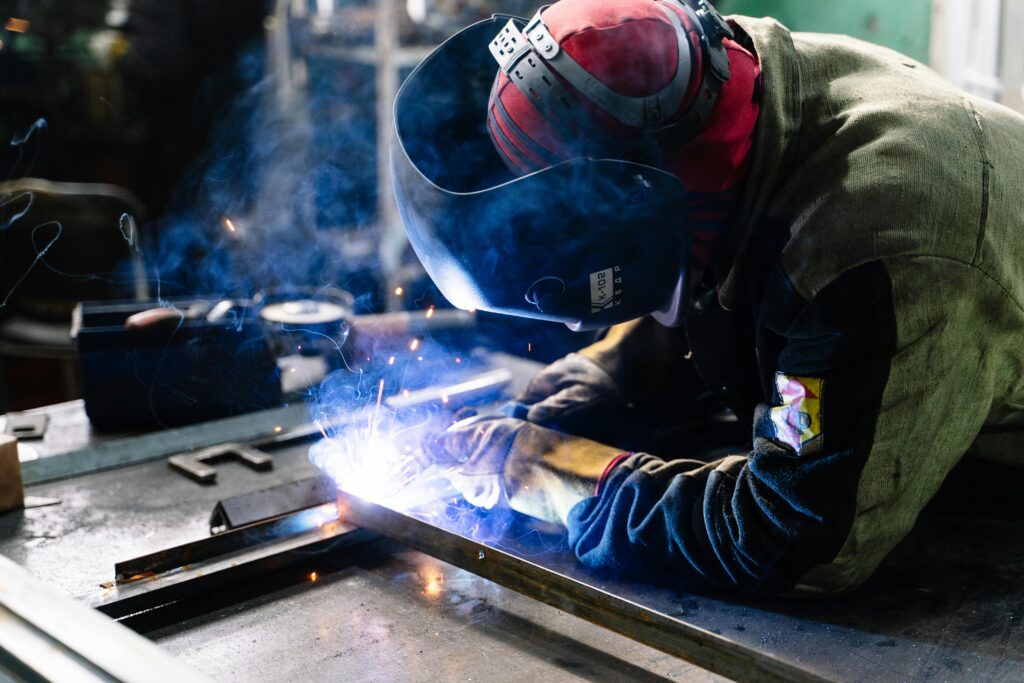In a significant shift towards ensuring safer working environments, Australia has updated its workplace exposure standard for welding fumes, reducing the acceptable limit from 5 milligrams per cubic meter (mg/m³) to 1 mg/m³ over an 8-hour time-weighted average. This change reflects a growing awareness of the health risks associated with welding fumes and a commitment to worker safety across various industries.
Understanding the Change
Welding is a ubiquitous process in sectors ranging from manufacturing to agriculture. It involves melting metal parts to join them together, which produces fumes that can be harmful. These fumes comprise fine particles of metal oxides, silicates, and fluorides. The specific composition depends on the materials being welded, the type of welding wire, and any surface coatings. Recognized as a human carcinogen, welding fume exposure poses significant hazards, including respiratory issues, asthma, metal fume fever, and even long-term lung damage.
Why the Standard Has Changed
The decision to tighten exposure standards comes from a deeper understanding of the risks posed by welding fumes. Research has identified these fumes as not only carcinogenic but also capable of causing a range of respiratory and systemic health issues. These include irritation of the respiratory tract, chest tightness, asphyxiation, lung damage, bronchitis, pneumonia, and emphysema. Given the severity of these risks, reducing exposure limits is a critical step in protecting workers.
Factors Influencing Exposure
The risk and severity of exposure to welding fumes depend on several factors, including the welding method used, the materials involved, any surface coatings, and the working environment. Techniques like arc air gouging, flux core, MMAW (Manual Metal Arc Welding), MIG (Metal Inert Gas) welding, and flame cutting produce the highest amounts of fumes. Working in confined spaces or areas with insufficient ventilation exacerbates the risk, with visible fume clouds indicating significant exposure.
Strategies to Limit Exposure
To mitigate these risks, employers are encouraged to adopt safer practices. These include opting for welding processes that generate fewer fumes, such as TIG (Tungsten Inert Gas) welding, and improving workplace ventilation through the use of fume extractors and fans. Providing personal protective equipment (PPE), like respirators, is also vital. Training for workers on the hazards of welding fumes and how to use protective measures effectively is equally important. Where possible, isolating workers from exposure areas and regularly monitoring fume levels can help ensure the safety of all employees.
Next Steps for Employers
Moving forward, it is crucial for workplaces to maintain clean welding surfaces, establish effective ventilation systems, and provide appropriate respirators to each welder. Supervising and training workers to use controls correctly, along with regular monitoring of exposure levels, will be key in adhering to the new standards and ensuring a safer working environment.
This update to the welding fume exposure standard is a positive step towards acknowledging and addressing the health risks associated with welding activities. By implementing these changes, Australia sets a precedent for workplace safety, highlighting the importance of proactive measures in protecting workers’ health and wellbeing.
If you would like to learn how ProcessWorx can help with Human Resources or Work Health & Safety, please contact us on 08 9316 9896, enquiries@processworx.com.au. Also watch an Introduction to ProcessWorx.
Follow ProcessWorx on LinkedIn, Facebook, Instagram, YouTube, and X to keep up with the latest HR and Safety news.





